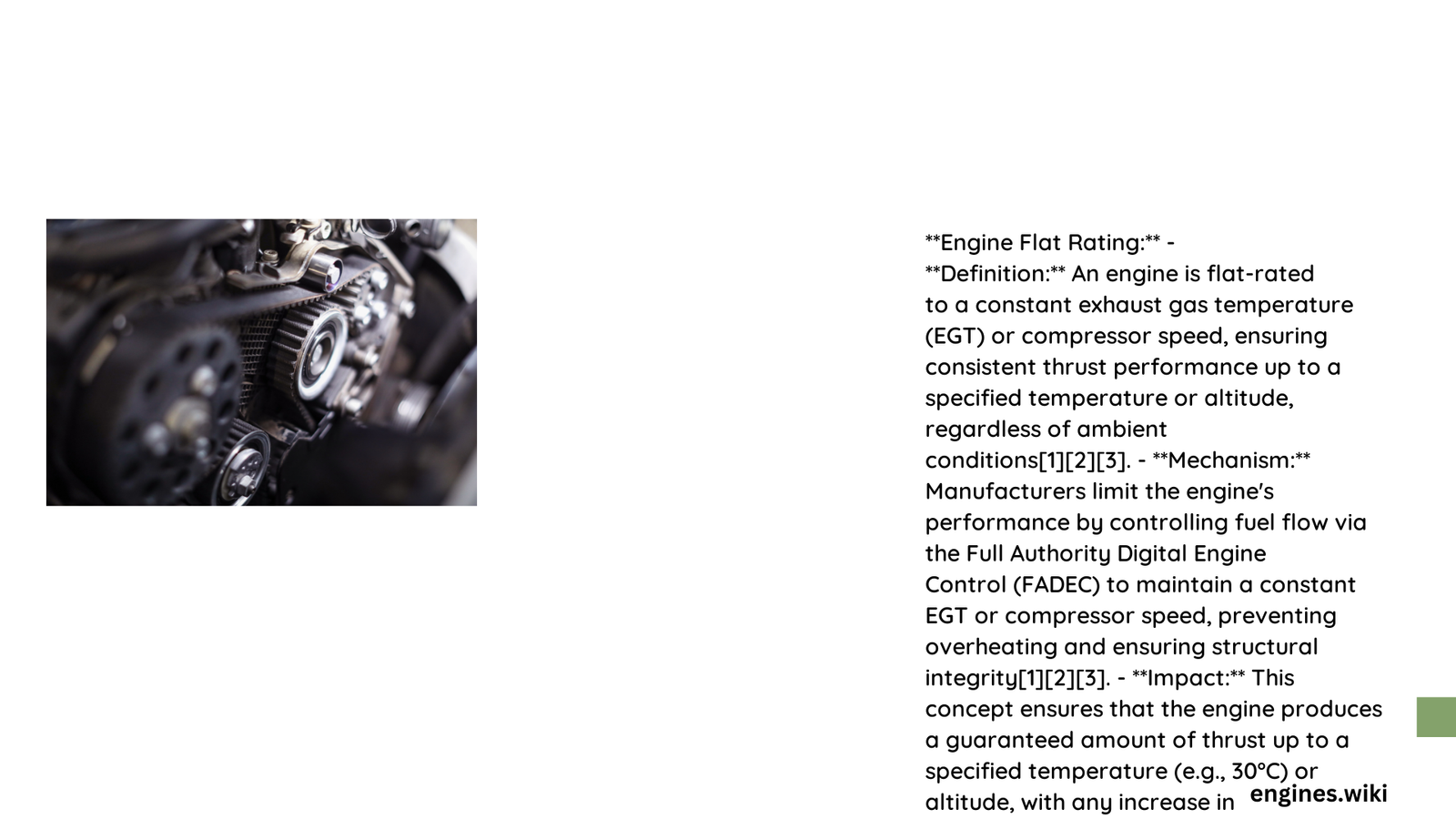Engine flat rating represents a sophisticated engineering technique where power output is strategically constrained to ensure optimal performance, structural integrity, and consistent operational efficiency across varying environmental conditions. This method allows engines to maintain predictable power levels while adapting to temperature, altitude, and other critical parameters that traditionally impact mechanical performance.
What is Engine Flat Rating?
Engine flat rating is a precision engineering approach that deliberately limits an engine’s maximum power output to a predetermined level, regardless of external environmental variables. This technique ensures consistent performance by intelligently managing fuel flow, temperature compensation, and power generation mechanisms.
Key Technical Characteristics
| Parameter | Description | Impact |
|---|---|---|
| Power Limitation | Constrains maximum output | Prevents structural overload |
| Temperature Compensation | Adjusts performance at different temperatures | Maintains consistent thrust |
| Fuel Management | Optimizes fuel flow dynamically | Enhances efficiency |
Why Do Engineers Implement Flat Rating?

Performance Consistency
Engineers implement flat rating to achieve several critical objectives:
- Standardized Power Output: Maintain uniform performance across diverse conditions
- Structural Protection: Prevent mechanical stress beyond design specifications
- Predictable Operational Envelope: Create reliable performance metrics
Economic and Technical Benefits
- Reduced Mechanical Wear
- Prevents excessive stress on engine components
- Extends overall engine lifespan
-
Minimizes unexpected maintenance requirements
-
Fuel Efficiency
- Optimizes fuel consumption
- Reduces unnecessary power generation
- Improves overall energy utilization
How is Flat Rating Calculated?
Calculating engine flat rating involves complex mathematical models considering multiple variables:
- Power Output Formula:
[P = \frac{2 \pi N T}{60}]
Where: - P = Power
- N = Rotational Speed
- T = Torque
Computational Factors
- Outside air temperature
- Altitude
- Atmospheric pressure
- Engine design specifications
Regulatory Standards and Compliance
Aviation Regulatory Framework
- FAA Guidelines: Establish strict performance standards
- EASA Regulations: Define international compliance metrics
- Type Certificate Requirements: Mandate specific performance documentation
Real-World Applications
Aerospace Industry
- Commercial aircraft engines
- Military aviation platforms
- High-performance jet propulsion systems
Automotive Sector
- High-performance racing vehicles
- Precision engineering applications
- Advanced transportation technologies
Advanced Implementation Strategies
Digital Engine Management
Modern Full Authority Digital Engine Control (FADEC) systems enable:
– Real-time performance monitoring
– Instantaneous power adjustment
– Predictive maintenance capabilities
Technical Limitations and Considerations
Potential Drawbacks
- Reduced maximum power potential
- Complex computational requirements
- Higher initial engineering costs
Future Technological Trends
Emerging Innovations
- Artificial intelligence integration
- Advanced materials engineering
- Quantum computing performance modeling
Conclusion
Engine flat rating represents a sophisticated approach to managing mechanical performance, bridging the gap between theoretical design and practical operational requirements.
Expert Insights
Professionals recognize flat rating as a critical technique for optimizing engine reliability, efficiency, and longevity across diverse technological domains.
Recommended Reading
- Advanced Propulsion Systems
- Modern Engineering Techniques
- Aerospace Performance Management
Reference:
– SAE International Publications
– AIAA Technical Papers
– NASA Technical Reports
